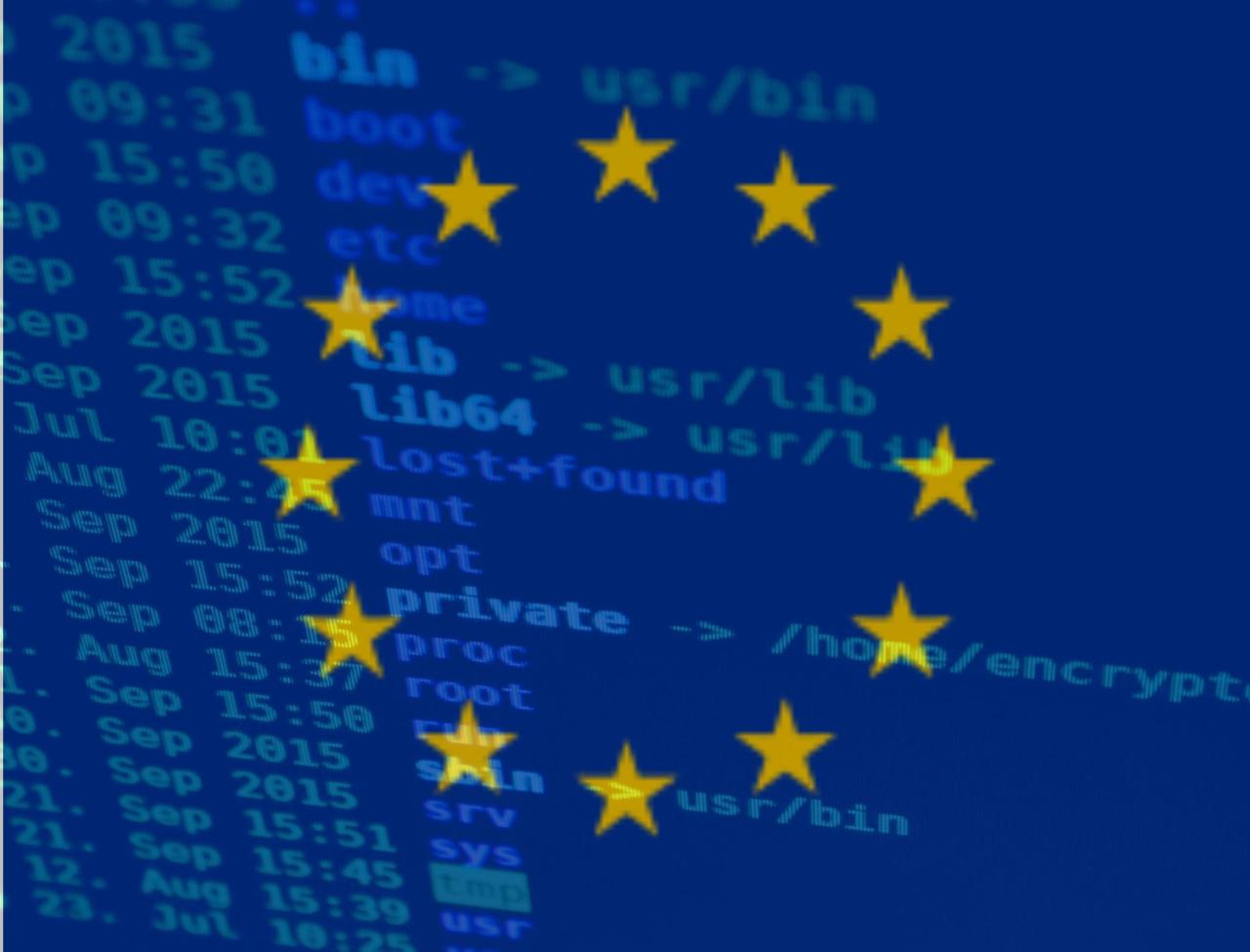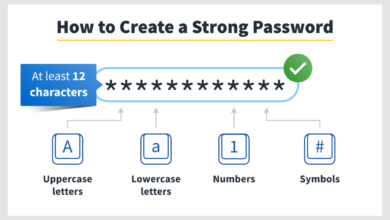
Cyber Attack on European Union Institutions
Cyber attack on European Union institutions is a growing concern, impacting everything from sensitive data to critical infrastructure. These attacks aren’t just isolated incidents; they represent a sophisticated and evolving threat landscape, with various actors employing increasingly complex tactics. Understanding the types of attacks, the perpetrators behind them, and the EU’s response is crucial to safeguarding the Union’s digital sovereignty and protecting its citizens.
This post delves into the multifaceted nature of these cyber threats, examining the vulnerabilities of EU institutions, the consequences of successful attacks, and the ongoing efforts to strengthen cybersecurity defenses both within the EU and through international collaboration. We’ll explore the roles of state-sponsored actors, criminal organizations, and hacktivists, analyzing their motivations and the damage they inflict. We’ll also look at future trends and challenges, including the impact of emerging technologies like AI and quantum computing on the cyber threat landscape.
Types of Cyber Attacks Targeting EU Institutions

The European Union, with its vast network of interconnected institutions and member states, represents a prime target for sophisticated cyberattacks. These attacks not only threaten the smooth functioning of EU governance but also pose a risk to the security and privacy of its citizens. Understanding the nature and scale of these threats is crucial for developing effective countermeasures.
EU institutions face a diverse range of cyber threats, leveraging various attack vectors to achieve their malicious goals. These attacks often exploit vulnerabilities in systems and human behavior, aiming to steal sensitive data, disrupt operations, or spread disinformation.
Common Cyberattack Vectors Against EU Institutions
Several attack types consistently target EU institutions, demanding robust security protocols and continuous vigilance. The following table details some of the most prevalent threats:
| Attack Type | Description | Impact | Example |
|---|---|---|---|
| Phishing | Deceptive attempts to acquire sensitive information such as usernames, passwords, and credit card details by masquerading as a trustworthy entity in electronic communication. | Data breaches, identity theft, financial losses, compromised accounts. | Emails appearing to be from the European Commission requesting login credentials or containing malicious links. |
| Malware | Malicious software designed to damage, disrupt, or gain unauthorized access to computer systems. This includes viruses, worms, Trojans, ransomware, and spyware. | Data loss, system failure, operational disruption, data encryption and ransom demands. | Ransomware attacks encrypting critical data on EU servers, demanding payment for decryption. |
| Denial-of-Service (DoS) and Distributed Denial-of-Service (DDoS) Attacks | Overwhelming a system with traffic, rendering it unavailable to legitimate users. DDoS attacks utilize multiple compromised systems (botnets) to amplify the attack’s impact. | Website unavailability, service disruption, loss of productivity, damage to reputation. | A coordinated DDoS attack targeting the European Parliament’s website, making it inaccessible to the public. |
| Spear Phishing | A highly targeted form of phishing that focuses on specific individuals or organizations, often using personalized information to increase its effectiveness. | Data breaches, compromise of high-value accounts, access to sensitive information. | Targeted emails sent to EU officials with personalized details, aiming to gain access to internal systems. |
| Supply Chain Attacks | Targeting vulnerabilities in the software supply chain to compromise multiple organizations indirectly. | Widespread compromise, cascading effects across multiple systems, significant data breaches. | Compromising a software vendor used by multiple EU institutions, enabling attackers to gain access to numerous systems. |
Unique Vulnerabilities of EU Institutions
The unique structure and operations of EU institutions create specific vulnerabilities. The interconnectedness of various agencies and the reliance on shared infrastructure amplify the potential impact of successful attacks. The sheer volume of data handled by these institutions, including sensitive personal information and policy documents, makes them particularly attractive targets. Furthermore, the complex bureaucratic processes and diverse technological landscapes across member states can create inconsistencies in security protocols, leaving certain areas more vulnerable.
Comparison of Attack Sophistication and Resources
Cyberattacks targeting EU institutions often demonstrate a higher level of sophistication and resource commitment compared to those targeting private entities. State-sponsored actors, or groups with significant financial backing, are frequently implicated in these attacks, utilizing advanced techniques like zero-day exploits and custom-built malware. While private entities can also be victims of sophisticated attacks, the resources and expertise dedicated to targeting EU institutions are often considerably greater, reflecting the geopolitical significance of their data and operations.
This necessitates a more robust and proactive security posture for EU institutions, demanding continuous investment in advanced security technologies and skilled personnel.
Actors Behind Cyber Attacks on EU Institutions
The digital landscape surrounding the European Union is increasingly complex, with a diverse range of actors employing sophisticated cyberattacks against its institutions. Understanding the motivations and methods of these actors is crucial for effective cybersecurity strategies. This section will explore the key players involved, their objectives, and the evolving nature of their attacks.
Attributing cyberattacks with absolute certainty is often challenging due to the sophisticated techniques used to mask the origin and the difficulty in gathering definitive evidence. However, by analyzing attack vectors, techniques, and the context surrounding incidents, we can identify likely perpetrators and understand their motivations.
State-Sponsored Actors
State-sponsored actors represent a significant threat to EU institutions. These groups, often operating under the guise of legitimate entities, are motivated by geopolitical objectives, espionage, or the disruption of EU operations. Their resources and capabilities often surpass those of other actors, allowing them to launch highly complex and persistent attacks. They frequently leverage advanced persistent threats (APTs), employing custom malware and exploiting zero-day vulnerabilities to achieve their goals.
Examples of likely state-sponsored attacks include those leveraging sophisticated malware to steal sensitive information or disrupt critical infrastructure. The scale and sophistication of such attacks often point to the resources and expertise available only to nation-states.
Criminal Organizations
Criminal organizations are primarily motivated by financial gain. Their attacks often target EU institutions to steal sensitive data, which can then be sold on the dark web or used for extortion. These groups are highly adaptable, constantly evolving their techniques to bypass security measures. They often exploit vulnerabilities in software and systems to gain unauthorized access, focusing on data breaches and ransomware attacks.
Examples of attacks likely perpetrated by criminal organizations include large-scale data breaches targeting personal information or financial data. The ransom demands and the focus on financial gain are clear indicators of criminal motives.
Hacktivist Groups
Hacktivist groups are motivated by ideological or political goals. Their attacks are often aimed at raising awareness of specific issues or protesting EU policies. While their technical capabilities may be less sophisticated than those of state-sponsored actors or criminal organizations, their actions can still cause significant disruption and damage to reputation. Their attacks range from website defacements to data leaks, chosen for their public impact.
Examples of hacktivist attacks often involve the public release of sensitive data or the defacement of websites to promote a specific cause. The messaging associated with the attack often reveals the hacktivist’s political or ideological motivation.
Impact and Consequences of Cyber Attacks
Cyberattacks against EU institutions carry significant and far-reaching consequences, extending beyond immediate technical disruptions to impact the economic, political, and social fabric of the Union. The scale of damage depends heavily on the target, the sophistication of the attack, and the effectiveness of the response. Understanding these impacts is crucial for developing robust cybersecurity strategies and mitigating future risks.The consequences of a successful cyberattack can be devastating.
Data breaches expose sensitive information, leading to privacy violations, financial fraud, and erosion of public trust. Disruption of essential services, such as communication networks or critical infrastructure, can cripple government operations and cause widespread societal disruption. Financial losses can be immense, encompassing direct costs of remediation, loss of productivity, and potential legal liabilities. Finally, reputational damage can severely undermine the credibility and authority of the affected institution, both domestically and internationally.
Data Breaches and Information Leaks
A successful cyberattack can result in the theft or exposure of vast amounts of sensitive data. This could include personal information of citizens, confidential government documents, intellectual property, or financial records. The consequences of such breaches are multifaceted. For example, a breach affecting the European Commission’s database of personal information on EU citizens could lead to identity theft, fraud, and widespread public anger, significantly damaging the EU’s reputation and eroding public trust in its institutions.
The cost of notifying affected individuals, conducting forensic investigations, and implementing remedial measures can also be substantial.
Disruption of Services and Operational Downtime
Cyberattacks can severely disrupt the operations of EU institutions. A denial-of-service attack, for instance, could overwhelm a government website, rendering it inaccessible to the public. More sophisticated attacks could compromise internal systems, leading to prolonged outages of essential services, such as online tax filing or passport applications. This disruption can have significant economic consequences, impacting businesses and citizens reliant on these services.
The cost of restoring services, compensating for lost productivity, and addressing reputational damage can run into millions of euros.
Financial Losses
The financial impact of cyberattacks on EU institutions can be substantial. This includes the direct costs of incident response, such as hiring cybersecurity experts, conducting forensic investigations, and implementing security upgrades. Indirect costs can be even more significant, encompassing lost productivity, reputational damage leading to decreased investment, and potential legal liabilities resulting from data breaches or service disruptions.
For example, a ransomware attack crippling a major EU agency could lead to significant financial losses due to ransom payments, operational downtime, and legal fees.
Reputational Damage and Loss of Public Trust
Perhaps the most intangible yet significant consequence of cyberattacks is reputational damage. A successful attack can severely undermine the credibility and trustworthiness of the affected institution, both domestically and internationally. This damage can be particularly severe if the attack exposes sensitive information or reveals vulnerabilities in the institution’s security posture. The loss of public trust can have long-term consequences, affecting the institution’s ability to effectively carry out its mandate and maintain its legitimacy.
Scenario: A Cyberattack on the European Central Bank
Imagine a sophisticated, multi-stage cyberattack targeting the European Central Bank (ECB). The attack begins with a phishing campaign targeting ECB employees, leading to the installation of malware on internal systems. This malware grants attackers access to the ECB’s internal network, allowing them to exfiltrate sensitive financial data, including details of upcoming monetary policy decisions. The attackers then launch a distributed denial-of-service (DDoS) attack, overwhelming the ECB’s public-facing website and disrupting online banking services across the Eurozone.
The cascading effects are immediate and far-reaching. The leak of confidential information undermines market confidence, causing significant volatility in financial markets. The disruption of online banking services causes widespread economic disruption, impacting businesses and individuals across the Eurozone. The ECB faces immense reputational damage, leading to a crisis of confidence in the Euro and the EU’s financial stability.
The economic fallout could be catastrophic, potentially triggering a financial crisis.
The recent cyber attacks on European Union institutions highlight the urgent need for robust, secure systems. Building these systems faster and more efficiently is crucial, and that’s where advancements like domino app dev the low code and pro code future come into play. Improved development speeds mean quicker deployment of security patches and updates, a vital defense against future attacks targeting EU infrastructure.
Ultimately, strengthening our digital defenses requires a multi-pronged approach, including leveraging modern development methodologies.
Economic Impacts
The economic impacts of a major cyberattack on EU institutions can be severe. These include direct financial losses from ransom payments, remediation costs, and lost productivity. Indirect losses can stem from market volatility, decreased investor confidence, and disruptions to essential services. The overall economic impact can be felt across the EU, affecting businesses, consumers, and the broader economy.
The 2017 NotPetya ransomware attack, while not directly targeting EU institutions, serves as a stark example of the widespread economic damage a large-scale cyberattack can cause.
The recent cyber attacks on European Union institutions highlight the urgent need for robust security measures. Strengthening defenses requires a proactive approach, and that’s where solutions like bitglass and the rise of cloud security posture management become crucial. Improved cloud security posture management is key to preventing future breaches and protecting sensitive EU data from increasingly sophisticated threats.
Political Impacts
Cyberattacks can have significant political ramifications. Successful attacks can undermine the credibility and authority of EU institutions, potentially leading to political instability. The exposure of sensitive information can fuel political controversies and erode public trust in government. International relations can also be affected, as cyberattacks can escalate tensions between states and lead to diplomatic disputes. The potential for foreign interference in elections through cyberattacks is a particularly serious concern.
Social Impacts
The social impacts of cyberattacks on EU institutions can be profound. Data breaches can lead to widespread privacy violations, causing significant distress and anxiety among affected individuals. Disruptions to essential services can cause inconvenience and hardship, particularly for vulnerable populations. The erosion of public trust in EU institutions can have long-term consequences for social cohesion and democratic stability.
Furthermore, the spread of misinformation and disinformation through cyberattacks can further polarize societies and undermine social trust.
EU’s Cybersecurity Defenses and Response Mechanisms: Cyber Attack On European Union Institutions
The European Union faces a constantly evolving threat landscape, necessitating a robust and adaptable cybersecurity infrastructure. While significant strides have been made, the complexity of modern cyberattacks demands continuous improvement and proactive measures to protect EU institutions and citizens. This section examines the existing defenses and response mechanisms, highlighting areas for future enhancement.
The EU’s cybersecurity defenses are a multifaceted system involving a range of institutions, agencies, and national initiatives. At the heart of this system lies the European Union Agency for Cybersecurity (ENISA), which provides expertise and support to member states. National Computer Security Incidents Response Teams (CSIRTs) play a critical role in handling cyber incidents at the national level, often working in coordination with ENISA and other EU bodies.
Furthermore, the EU’s Network and Information Security Directive (NIS Directive) establishes a framework for cybersecurity risk management across critical infrastructure sectors. This involves mandatory reporting of significant cybersecurity incidents and the implementation of security measures to mitigate risks.
EU’s Cybersecurity Infrastructure and Defense Mechanisms
The EU’s cybersecurity infrastructure relies on a combination of technical and policy measures. Technically, this includes investments in secure communication networks, data protection technologies, and threat intelligence sharing platforms. The policy framework encompasses legislation such as the NIS Directive and the General Data Protection Regulation (GDPR), aiming to harmonize cybersecurity standards across member states and promote a culture of cybersecurity awareness.
However, the effectiveness of these mechanisms is dependent on consistent implementation and effective collaboration between national authorities and EU agencies. For example, the NIS Directive’s effectiveness varies across member states due to differing levels of implementation and enforcement. This highlights the need for stronger harmonization and more robust mechanisms for ensuring compliance.
EU’s Response Mechanisms to Cyberattacks
The EU’s response to cyberattacks involves a multi-layered approach. ENISA plays a crucial coordinating role, providing technical assistance and expertise to member states during incidents. National CSIRTs are responsible for handling incidents within their respective territories, often collaborating with each other and with ENISA. The EU also engages in international cooperation to address transnational cyber threats, participating in various initiatives and information-sharing platforms.
The legal framework, including the NIS Directive, provides a basis for accountability and legal recourse in the event of a cyberattack. However, challenges remain in terms of timely incident response and effective cross-border collaboration, particularly when dealing with complex, multi-national attacks. For instance, the response to the NotPetya ransomware attack in 2017 highlighted the need for improved information sharing and coordinated response mechanisms across the EU.
Strategies for Improving EU Cybersecurity Posture
To enhance its cybersecurity posture, the EU should prioritize several key strategies. Increased investment in cybersecurity research and development is crucial, fostering innovation in areas such as artificial intelligence-driven threat detection and advanced encryption techniques. Strengthening cooperation between national CSIRTs and ENISA, through improved information sharing platforms and standardized response procedures, is also essential. Furthermore, raising public awareness and promoting cybersecurity education across all levels of society can significantly enhance overall resilience.
Finally, fostering a stronger cybersecurity culture within EU institutions and promoting a more proactive approach to risk management are vital steps towards building a more secure digital environment. For example, adopting a zero-trust security model across all EU institutions could significantly reduce the impact of potential breaches. This model assumes no implicit trust and verifies every user and device attempting to access resources.
International Cooperation in Combating Cyber Threats

International cooperation is absolutely crucial in the fight against cyber threats targeting the EU and other nations. No single country possesses the resources or expertise to effectively combat the sophisticated and ever-evolving nature of modern cyberattacks alone. A coordinated global response is necessary to share intelligence, develop common standards, and collectively pursue perpetrators. This collaborative approach is particularly vital given the transnational nature of cybercrime, where attackers often operate across borders, making jurisdictional issues a significant hurdle for individual nations.The effectiveness of international cybersecurity efforts hinges on the willingness of nations to share information and coordinate their responses.
This involves overcoming significant challenges, including differing legal frameworks, national security concerns, and the potential for information asymmetry. However, the benefits of cooperation far outweigh the challenges, as demonstrated by the increasing number of international agreements and initiatives aimed at bolstering cybersecurity collaboration.
EU Cybersecurity Strategies Compared to Other Global Players
The EU’s cybersecurity strategy focuses on a multi-layered approach encompassing legal frameworks, technological advancements, and international partnerships. The Network and Information Security Directive (NIS Directive) and the proposed NIS2 Directive aim to improve the cybersecurity posture of essential services across member states. This contrasts with the United States’ approach, which emphasizes a more market-driven approach with a strong focus on private sector innovation and collaboration, although with increasing government regulation in specific sectors.
China, on the other hand, prioritizes state control over the internet and cybersecurity infrastructure, often employing a more centralized and authoritarian approach. While the US prioritizes international cooperation, it also maintains a strong emphasis on national interests and technological superiority. China’s approach often prioritizes national interests and the promotion of its own technological standards and companies, sometimes at the expense of international cooperation.
This leads to differing priorities and approaches in international cybersecurity forums.
Best Practices for International Collaboration in Cybersecurity
Effective international collaboration requires a multifaceted approach. The following best practices are essential for strengthening global cybersecurity:
The importance of these best practices cannot be overstated. They provide a framework for building trust, sharing information effectively, and coordinating responses to cyber threats, ultimately contributing to a more secure global digital environment.
- Establish clear communication channels and protocols: This involves creating dedicated forums and mechanisms for information sharing and coordination among nations. Examples include joint cybersecurity exercises and intelligence sharing agreements.
- Develop common cybersecurity standards and frameworks: Harmonizing standards and frameworks across different countries reduces fragmentation and facilitates interoperability. This allows for easier collaboration in incident response and threat mitigation.
- Promote capacity building and technical assistance: Providing technical assistance and training to less developed countries helps strengthen their cybersecurity defenses and reduces their vulnerability to attacks.
- Foster public-private partnerships: Collaboration between governments and the private sector is essential for sharing threat intelligence, developing effective security solutions, and coordinating responses to cyber incidents.
- Enhance legal cooperation and extradition mechanisms: Strengthening international legal frameworks and extradition processes facilitates the prosecution of cybercriminals and deter future attacks.
- Develop mechanisms for attribution and accountability: The ability to attribute cyberattacks to specific actors is crucial for holding perpetrators accountable and deterring future attacks. This requires advanced technical capabilities and international cooperation in investigations.
Future Trends and Challenges

The cybersecurity landscape is constantly evolving, and the threats facing EU institutions are becoming increasingly sophisticated. The convergence of emerging technologies like artificial intelligence (AI) and quantum computing with traditional cyberattack methods presents unprecedented challenges. Understanding these future trends and proactively addressing them is crucial for maintaining the integrity and security of EU operations.The integration of AI and quantum computing into cyberattacks will dramatically alter the threat landscape.
AI can automate previously labor-intensive tasks, enabling attackers to launch more frequent and targeted attacks at scale. Quantum computing, while still in its nascent stages, poses a long-term threat to current encryption methods, potentially rendering much of our digital security infrastructure obsolete.
AI-Powered Cyberattacks
AI is already being used to enhance various stages of cyberattacks. For instance, AI-powered malware can adapt and evade detection more effectively than traditional malware, making it incredibly difficult to contain. Furthermore, AI can be used to automate phishing campaigns, creating highly personalized and convincing messages that are more likely to succeed in deceiving targets. The increasing sophistication of AI-driven social engineering attacks is a significant concern.
We’ve seen examples of AI generating realistic fake videos and audio recordings (“deepfakes”) used to manipulate individuals and potentially influence policy decisions. This necessitates a multi-layered approach to defense, combining technical solutions with robust security awareness training.
Quantum Computing’s Threat to Encryption, Cyber attack on european union institutions
Quantum computers, with their immense processing power, pose a significant threat to widely used public-key cryptography algorithms, such as RSA and ECC. These algorithms underpin much of our online security, protecting sensitive data and communications. While a large-scale, fault-tolerant quantum computer capable of breaking current encryption is still years away, the potential threat necessitates proactive research and development of quantum-resistant cryptographic algorithms.
The EU needs to invest heavily in post-quantum cryptography and develop transition strategies to migrate to these new algorithms before quantum computers reach a level of maturity that poses a real threat. This transition will require significant planning and coordination across various sectors.
Challenges in Combating Evolving Threats
Effectively combating these evolving threats requires a multi-faceted approach. The sheer scale and complexity of the digital environment make it difficult to detect and respond to attacks in real-time. Furthermore, the increasing interconnectedness of systems means that a breach in one area can quickly cascade into a wider system-wide compromise. The shortage of skilled cybersecurity professionals further exacerbates the challenge, creating a significant skills gap in the fight against cyber threats.
The rapid pace of technological advancement also necessitates continuous adaptation and innovation in cybersecurity defenses.
Strengthening Cybersecurity Defenses and International Cooperation
Strengthening cybersecurity defenses requires a combination of technical, operational, and strategic measures. Investing in advanced threat detection and response systems, improving incident response capabilities, and implementing robust security protocols are crucial. Furthermore, fostering a culture of cybersecurity awareness and providing comprehensive training to all staff is essential. International cooperation is also vital in combating cyber threats. Sharing threat intelligence, coordinating responses to attacks, and establishing common standards and best practices are critical for effective defense.
The most critical recommendation is to establish a robust, pan-European cybersecurity agency with significant resources and authority to coordinate national efforts, share intelligence, and develop and implement common cybersecurity standards and strategies. This agency should have the power to mandate minimum cybersecurity standards across all EU institutions and member states, fostering a unified and resilient approach to cyber defense.
Ultimate Conclusion
The threat of cyberattacks against European Union institutions is real and ever-present. While the EU has implemented various defensive measures and response mechanisms, the evolving nature of cyber threats necessitates a continuous adaptation and improvement of its cybersecurity posture. Strengthening international cooperation, investing in cutting-edge technologies, and fostering a culture of proactive cybersecurity awareness are essential steps in mitigating future risks and safeguarding the digital integrity of the EU.
FAQs
What is the EU’s main cybersecurity agency?
The EU’s main cybersecurity agency is the European Union Agency for Cybersecurity (ENISA).
Are there specific laws in the EU addressing cyberattacks?
Yes, the EU has implemented several directives and regulations, such as the NIS Directive and the GDPR, which address cybersecurity and data protection in the context of cyberattacks.
How can individuals contribute to EU cybersecurity?
Individuals can contribute by practicing good online hygiene, being aware of phishing attempts, and reporting suspicious activity.
What are the biggest challenges in preventing cyberattacks on EU institutions?
Challenges include the constant evolution of attack methods, the increasing sophistication of attackers, and the need for effective international cooperation.





